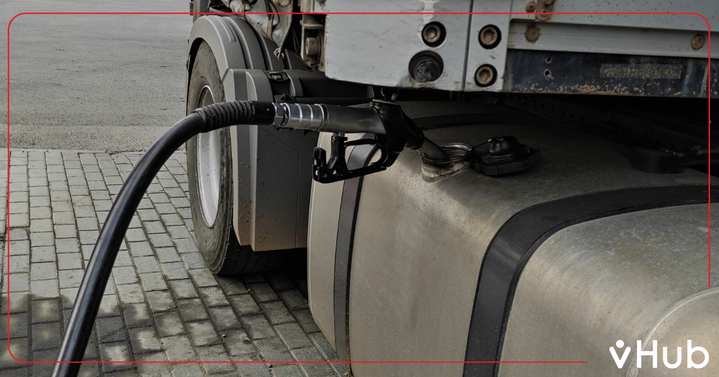Every driver knows that fuel is a major part of their expenses. In 2021, the average owner-operator spent nearly a fourth (23.4%) of their revenue paying for diesel. Fuel costs have continued to rise in 2022, causing increased inflation due to heightened shipping costs.
This blog looks at the expense of fuel and how to keep the impact of rising prices as minimal as possible.
What Does the Diesel Crisis Mean for Truck Drivers?
One major issue impacting the logistics industry is the fuel shortage in the U.S. Going into winter, the U.S. diesel inventories are the lowest they’ve been during the cool months in over 70 years. This shortage has also impacted farmers and energy plants that rely on fuel to keep things going.
According to Houston-based oil industry consultant Andrew Lipow, “This is the lowest diesel inventory we’ve had at this time of year since 1951. It is quite concerning, considering demand is four times what it was back then.”
As of November 2022, the average price at the pump was around $5.36 per gallon for diesel.
While brokers and owner-operators can often pass along the costs as a fuel surcharge, there is intense competition to get the best lanes with the lowest prices. The fuel crisis means carriers must be more aware of route optimization than ever before.
What is the Average Fuel Mileage for a Semi Truck?
Typically, the more weight you are trying to move, the more fuel you burn. However, the environment, the truck driver, and the truck itself also impact the average fuel used per mile.
In 2014, the Department of Transportation and Environmental Protection Agency set new fuel efficiency standards that raised the legal limit from under 5 MPG to over 7 MPG. So while trucks are better than they were before,
What Factors Influence Fuel Mileage?
Some everyday things impact how much fuel you use on the average run. Here are the biggest factors affecting your fuel mileage.
- Truck Make: The truck’s design will impact its wind resistance and fuel economy. Newer models use technologies like turbocharged engines to boost fuel efficiency. A pointed snout can offer minimal drag, while tapered trailer designs (boat-tailed trailers) can also improve fuel economy. Finally, since improper gear switching can waste fuel, automated manual transmissions can help reduce fuel use.
- Driver Use: Aside from improper gear switching, you should also train your drivers to get the most out of their rig with better driving habits. Some of the worst driving behaviors for wasting fuel include speeding, hard braking, accelerating quickly, excessive idling, underfilled tires, riding the breaks downhill, and hitting the road too soon without a warmup period.
- Road Conditions: It’s best to avoid the road altogether if conditions are dangerous, but weather can also increase fuel use. While out of your control, it can be helpful to at least understand what might cause a lower fuel economy. Wind can cause your rig to work much harder to stay on the road, especially when driving against a headwind. Ice and slick road conditions can cause your truck to spin out without gaining much ground. Rain and snow can make your truck less aerodynamic, impacting its ability to travel efficiently.
What Semi Trucks Have the Best Mileage?
Buying a truck is a huge investment for your business. While many factors are important, choosing fuel efficient semi trucks and trailers will help you cut costs down in the long run. On average, gas mileage for semi truck vehicles isn’t nearly as good as your typical family car.
Different kinds of trucks use different amounts of fuel. Dry van owner-operators spent less of their revenue (23%) on fuel than Reefer owners (28%) or flatbedders (30%). According to Commercial Truck Trader, the top four fuel-efficient big rigs with the lowest MPG for semi trucks include:
- Freightliner Cascadia Evolution (10 MPG)
- Peterbilt 570 (close to 10 MPG)
- Kenworth T680 (9 MPG)
- Mack Pinnacle (8 MPG)
Is There a Better Option than Diesel for Commercial Trucking?
Labs and scientists are searching for a better solution than diesel to keep our trucks powered. For example, the hydrogen fuel program has been around since the 1970s. People want to find more sustainable ways to move freight, but trucks need durable fuel solutions that will last for a good portion of their route.
Some are working to improve electric semi-trucks to run further with a shorter charge time. Not only will electric trucks drive the same and cost less to maintain, but they will also cut down on noise pollution by running at a quieter level.
However, finding a better solution takes time. As solutions improve, so will their popularity. For logistics players, it’s important to always look for cutting-edge solutions that can help you create a more efficient, optimized business.
3 More Ways to Improve Miles Per Gallon as a Commercial Truck Driver
As we already covered, training your drivers to follow better practices while on the road can help reduce fuel use. You can also avoid bad weather and invest in a truck with better fuel economy to keep your diesel use to a minimum. But you can still do more to lower your expenses caused by deadhead miles and inefficient routes.
Here are three more ways to improve MPG as a carrier, shipper, receiver, owner-operator, or broker:
1. Reducing deadhead miles is a big way to cut down on wasted fuel. Return trips without cargo waste driver time and increase wear and tear on trucks without moving goods. Companies are smart to reduce empty miles by finding return routes that help them increase utilization and efficiency.
2. Choosing load outs over tow aways allows power-only providers to make the most out of their trips. Not only are load outs less expensive, but they are also more economical and cut down on deadhead miles that waste fuel.
3. Drop-and-hook lanes can offer a two-way route that cuts down on wasted trips. The drop-and-hook setup allows receivers to take their time unloading without ridiculous detention times. It’s important to keep your trailer pool organized and track assets to keep things flowing efficiently.
How vHub Helps Optimize Routes and Improve Gas Mileage for Truckers
Until other sources of powering commercial trucks come to play, you’ll have to make the most out of your MPG with effective planning. Strategic tools like vHub help you do exactly that.
vHub makes it easier to accomplish smarter routes, asset sharing, drop-and-hook setups, load outs, and more. If you want to improve fuel mileage for semi trucks, vHub can help. We understand how 18-wheeler fuel economy could make or break your business as one of your leading expenses.
Find out how our platform helps improve asset utilization and semi truck fuel efficiency. Start your free account today!



